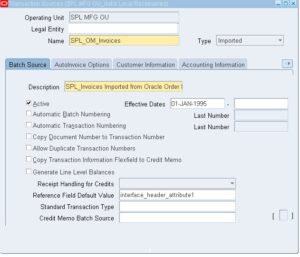The fundamental goal in developing the Java programming language was to make it portable, easy to use, and secure. Apart from that, there are a number of good aspects that contribute to the language’s popularity. Java buzzwords refer to the aspects of the language.
A list of the most important features of the Java language is given below.
1. Simple
Java is very easy to learn, and its syntax is simple, clean and easy to understand. According to Sun, the Java language is a simple programming language due to following characteristics .
a) Java syntax is based on C++ (making it simple for programmers to pick up after learning C++).
b) Many difficult and rarely-used features, such as explicit pointers and operator overloading, have been eliminated from Java.
c) There is no need to destroy referenced objects in Java because garbage collection is handled automatically.
2. Object-oriented
Java is a computer language that focuses on objects. In Java, everything is an object. Object-oriented software is defined as a collection of several types of objects that comprise both data and behavior.
Object-oriented programming (OOPs) is a software development and maintenance technique that follows a set of rules.
The following are the basic OOPS concepts:
- Object
- Class
- Inheritance
- Polymorphism
- Abstraction
- Encapsulation
3. Platform Independent
Java is platform independent, in contrast to other languages such as C, C++, and others, which are compiled on platform specific machines, whereas Java is written once and executed anywhere. The hardware or software environment in which a programmed runs is referred to as a platform.
In contrast to most other platforms, the Java platform is a software-based platform that works on top of other hardware-based systems. It consists of two parts:
- Runtime Environment
- API(Application Programming Interface)
Java code can operate on a variety of operating systems, including Windows, Linux, Sun Solaris, Mac OS, and others. The compiler converts Java code to bytecode and compiles it. This bytecode is platform agnostic, meaning it may be written once and run on numerous platforms.
4. Secured
Java Security is the company’s most well-known product. We can create virus-free systems using Java. Java is secure because of the following reasons:
- No explicit pointer
- Java programs run inside a virtual machine sandbox
- Classloader: The Java Runtime Environment (JRE) includes a classloader that is used to dynamically load Java classes into the Java virtual machine. It provides security by separating packages for classes imported from network sources on the local file system.
- Bytecode Verifier : It scans code fragments for unlawful code that could compromise an object’s access rights.
- Security Manager: It determines which resources, such as reading and writing on the local disc, a class has access to.
These security features are included by default in the Java programming language. Obviously, an application developer can provide some security via SSL, JAAS, cryptography, and other methods.
5. Robust
The term “robust” refers to a person’s ability to withstand Java is powerful because of the following reasons:
- It has a good memory management system.
- There aren’t enough pointers to prevent security issues.
- Automatic garbage collection is a feature of Java that operates on the Java virtual machine to remove things that are no longer in use by Java programmed.
- Exception handling and type checking are built into Java. All of these factors contribute to Java’s strength.
6. Architecture-neutral
Java is architecture neutral because it lacks implementation-dependent characteristics such as the fixed size of primitive types.
The int data type has a memory size of 2 bytes for 32-bit architecture and 4 bytes for 64-bit architecture in C programming. In Java, however, it takes up 4 bytes of memory on both 32-bit and 64-bit architectures.
7. Portable
Because Java bytecode may be run on any platform, it is portable. It does not necessitate any kind of implementation.
8. High-performance
Because Java bytecode is “closer” to native code than other traditional interpreted programming languages, it is faster. It is nonetheless slower than compiled languages (for example, C++).
Because Java is an interpreted language, it is slower than compiled languages such as C, C++, and others.
9. Distributed
Java is distributed because it allows users to create distributed applications in Java. RMI and EJB are used to create distributed applications. This feature of Java enables us to access files by calling methods from any machine on the Internet.
10. Multi-Threaded
A thread is a second program that runs at the same time as the main program. By defining numerous threads, we can create Java program that handle multiple tasks at once. Multi-key threading benefit is that each thread does not take up memory. A common memory space is shared by both of them. Multimedia, web applications, and other applications rely on threads.
11. Dynamic
Java is a dynamic programming language. It allows classes to be loaded dynamically. This means that classes are only loaded when they are needed. It also includes support for functions from its original languages, C and C++.
Java has features such as dynamic compilation and memory management (garbage collection).



